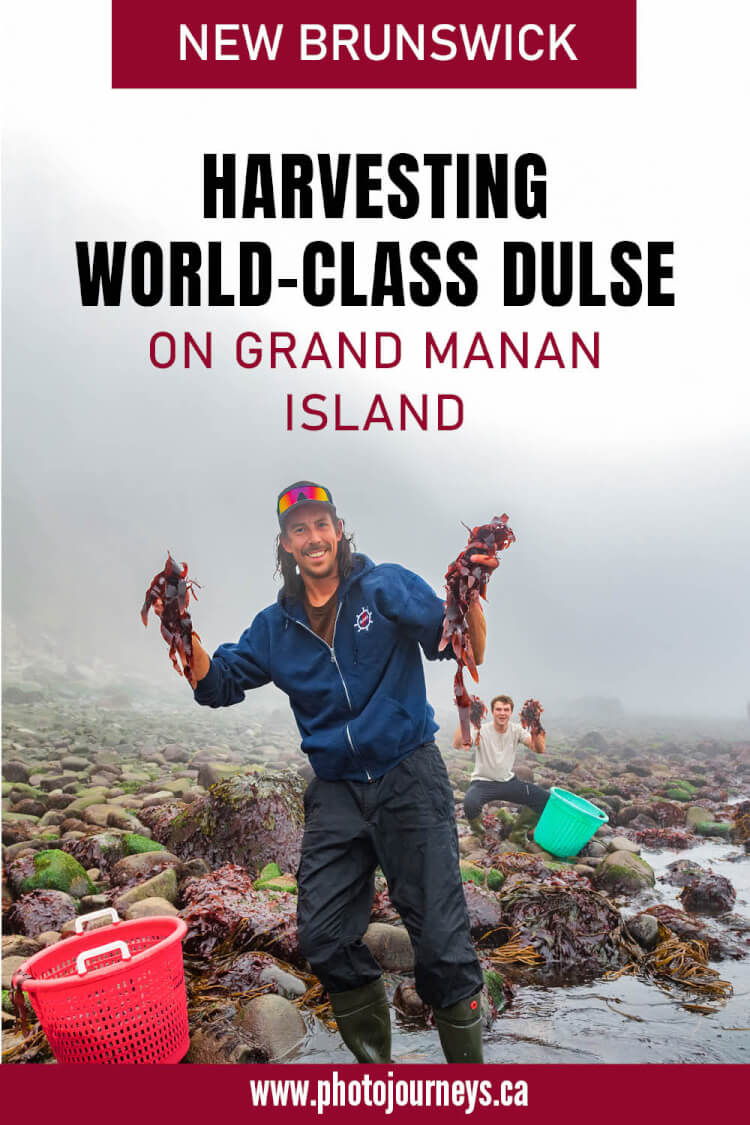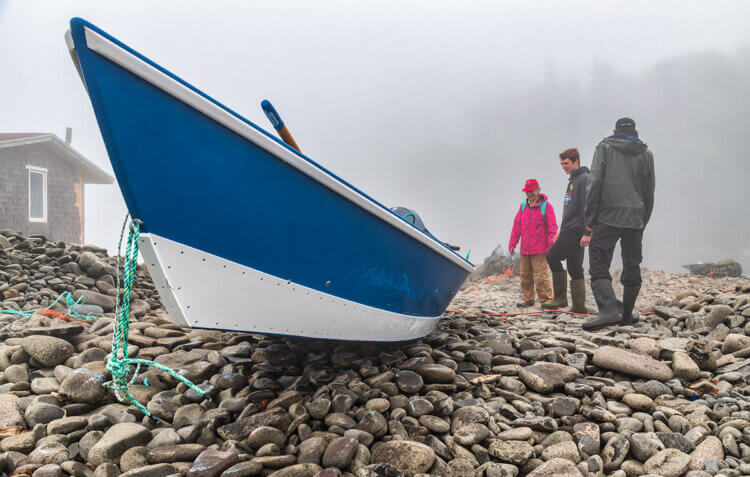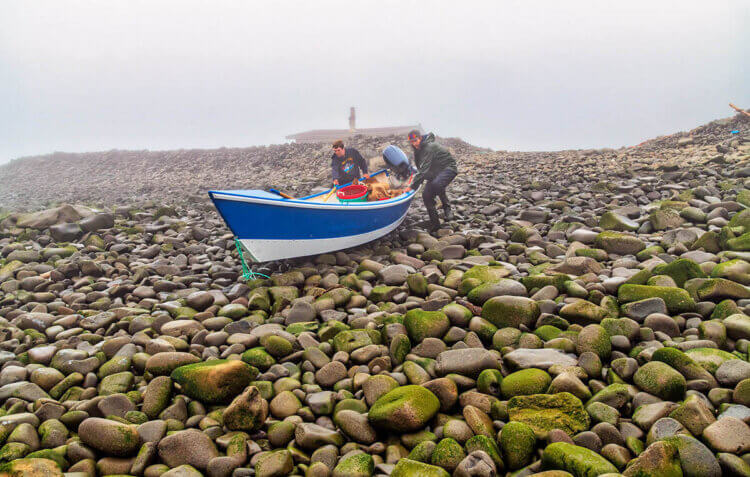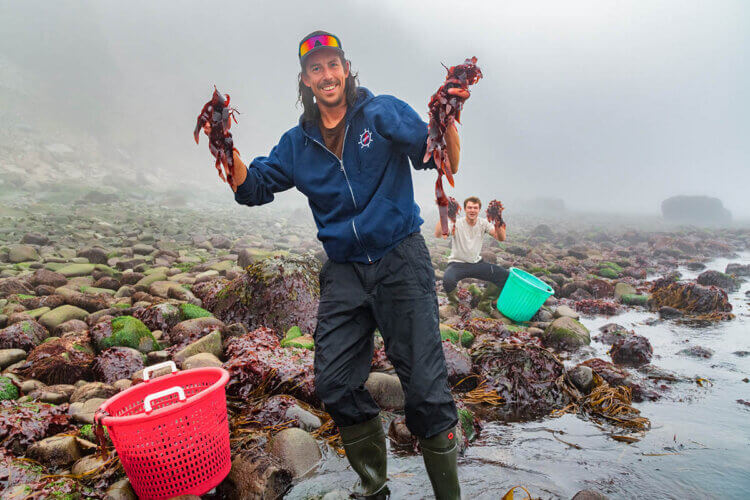
All photos © Robin and Arlene Karpan
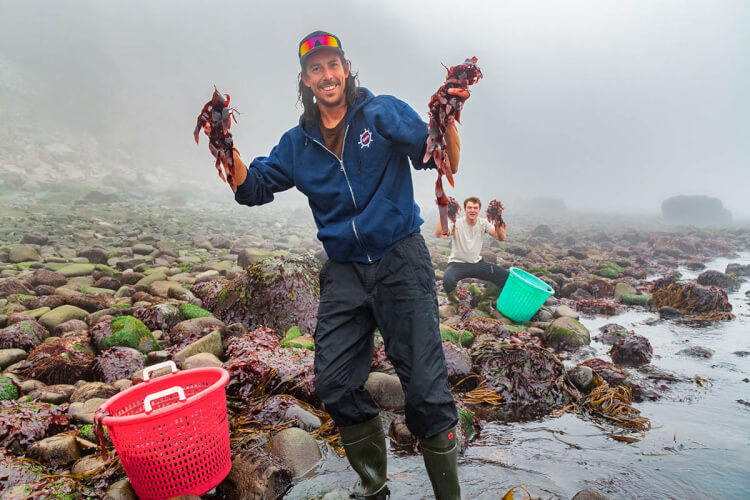
Ninety minutes away from the mainland by ferry, Grand Manan Island in the western end of the Bay of Fundy has long depended on the sea. Fish, lobster, and aquaculture are a big part of the economy, but the sea product that intrigued us most was a surprise – dulse.
This reddish-purple seaweed grows on rock surfaces in cold ocean waters and is picked by hand at low tide. Used for centuries, it is high in protein and fibre and loaded with other nutrients. While it grows in many places, we were assured by people here that the dulse from Grand Manan Island is simply the best in the world. We have never been big seaweed aficionados, but a claim like that needed looking into.
While we didn’t come to Grand Manan with dulse in mind, dulsing turned out to be a highlight of our visit. We had come for the island’s dramatic scenery, picture-perfect lighthouses and fishing villages, the prolific birdlife, and the island’s relaxed lifestyle – all of which lived up to expectations and will be the subject of future articles.
On to Dark Harbour
The reason why Grand Manan has the best dulse is that the high cliffs lining the entire west coast of the 24-kilometre-long island provide optimal shade so the exposed dulse is not sun damaged. Too much sun can “cook” the dulse, adversely affecting its quality. They also get a lot of fog here, as we soon discovered, which blocks the sun even more.
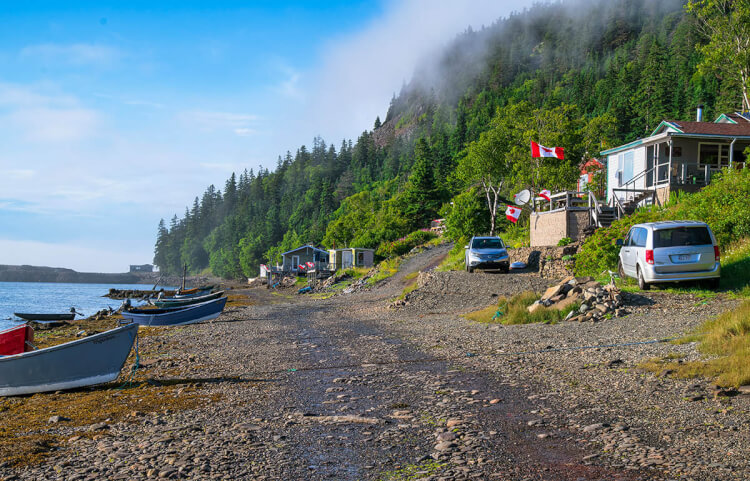
Dulsing central is the island’s only west shore community at Dark Harbour. It consists of only a few houses inside a natural rocky breakwater. Here we met two of the island’s experienced dulse harvesters — Vince Antworth and Kyle Mawer. Both are lobster fishermen but harvest dulse during the summer off-season.
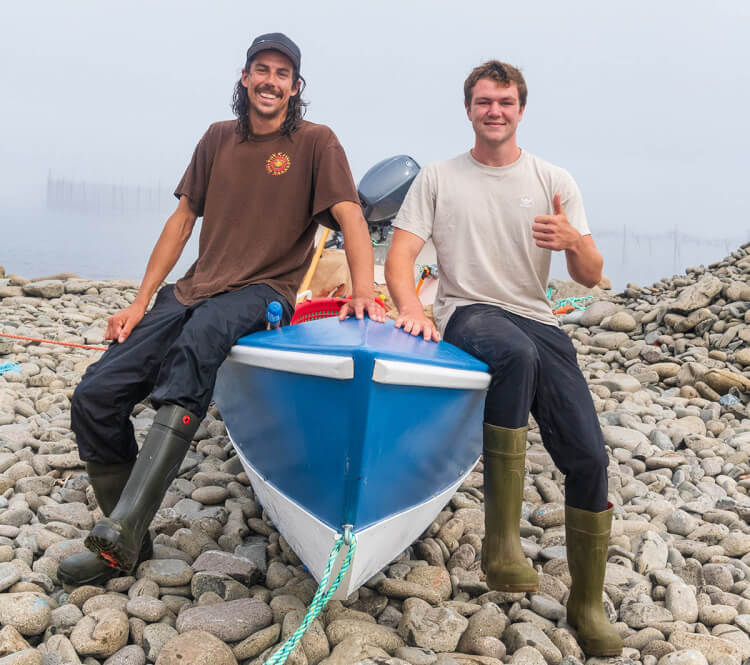
They use a 16-foot dory, a flat-bottomed boat with a long tradition in the Atlantic fishery. But this one has special adaptations. The entire bottom is coated with Kevlar, which eases its path to the water as they push it down the boulder-strewn beach and manoeuvre it through the rocky shallows where dulse grows. The Bay of Fundy has the highest tides in the world, so at low tide, it’s a long way down from the top of the breakwater where the boat is stored to the water’s edge.
Out to Sea
Vince and Kyle offered to take us out so that we could see how they pick dulse, so we climbed into the dory and headed off into fog so thick that we could barely make out the cliffs just back from the waterfront. The visibility wasn’t a big issue because we were only going a few minutes along the shore.
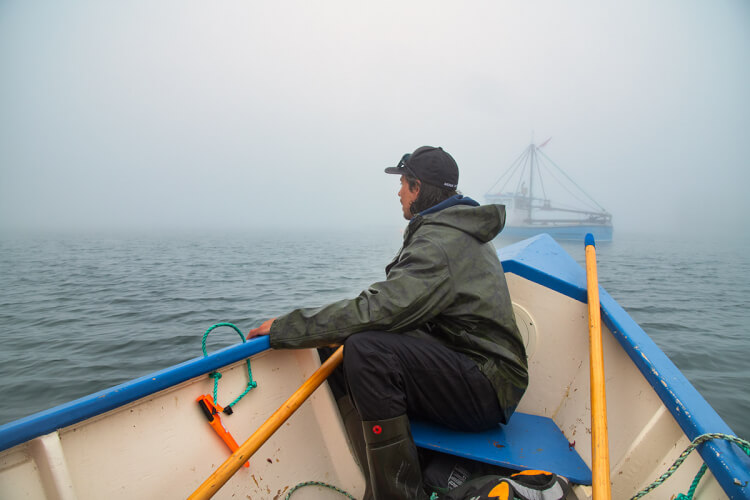
They nosed the boat into the rocks lining the shallow shore. Wearing rubber boots, they got out and expertly negotiated the incredibly slippery rocks and shallow water while holding large plastic baskets. They pulled off handfuls of the slimy dulse in just a few minutes. Fronds usually range from about eight to 16 inches long. There’s no danger of damaging the dulse because its strong roots easily grow back.
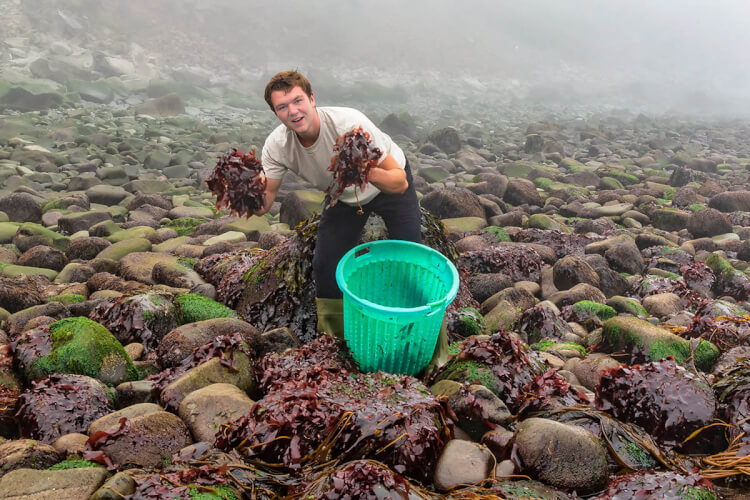

Not all of the seaweed on the rocks is dulse, so they have to be selective. Vince showed us samples of Nori, a seaweed used in making sushi.
On the ride back to Dark Harbour, Kyle emptied seawater from his rubber boots. It’s not easy to stay dry in this kind of work. Why not wear hip waders, we asked. He explained that the grip on hip waders is not as firm on wet rocks and it’s easy to slip and turn an ankle or worse. So he opts for a better grip on his rubber boots and just empties them more often.
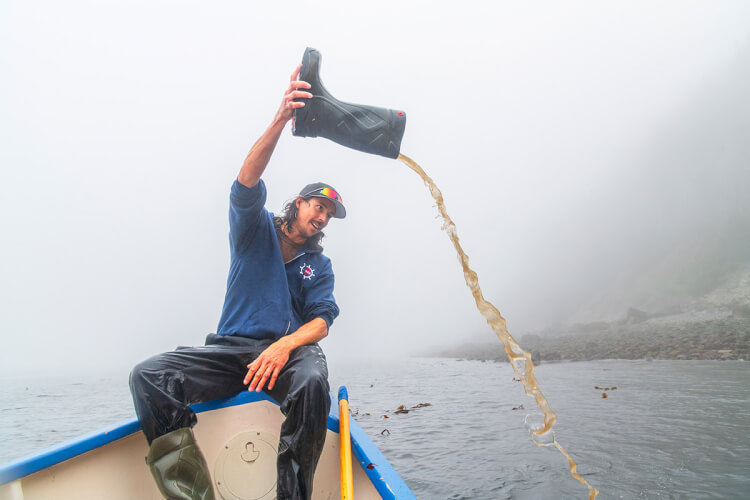
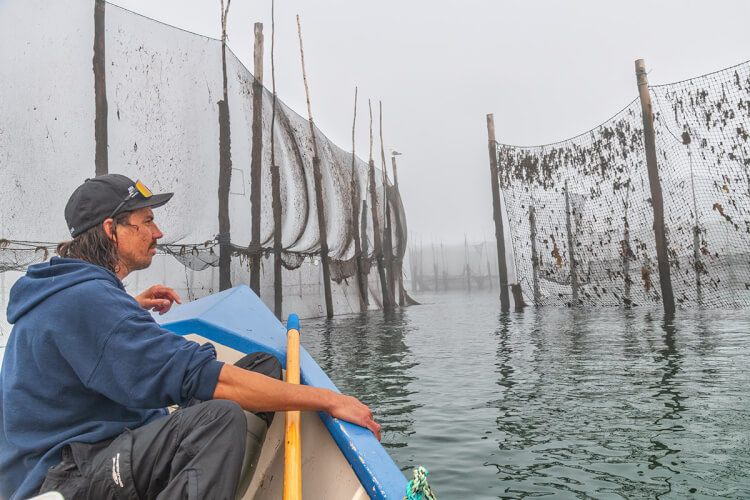
Drying the dulse
From Dark Harbour, it’s only a few minutes’ drive to Green Sea Harvest to dry and then sell the dulse. While Dark Harbour was dark and foggy, here we had full sunshine.
Wayne Green runs the operation, which comprises a huge flat area of stones laid on the ground and covered in netting. Here dulse harvesters spread the seaweed to dry after running it through a shaker which untangles it.
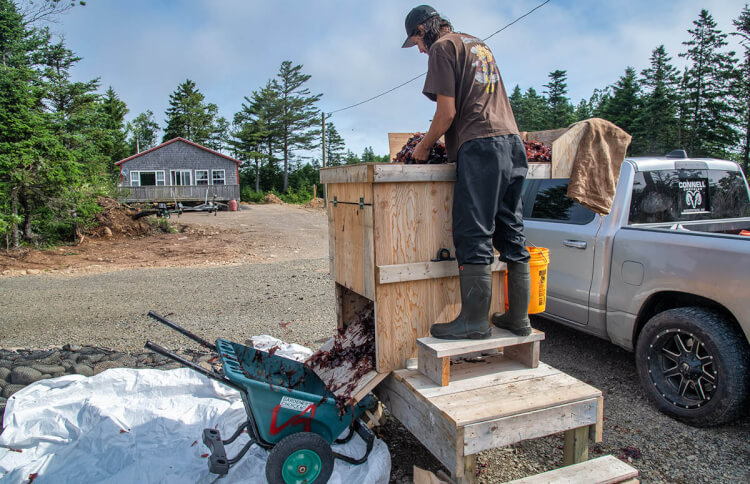
In ideal conditions it will dry in a day, losing about 80 per cent of its moisture content.
After Kyle and Vince spread their dulse, they said they’d be back in about four hours to turn it. Turning is a slick operation, in which they roll a wooden pole over the dulse. Since it sticks to the pole, they just turn it around and unroll it so that the other side is exposed to the sun.
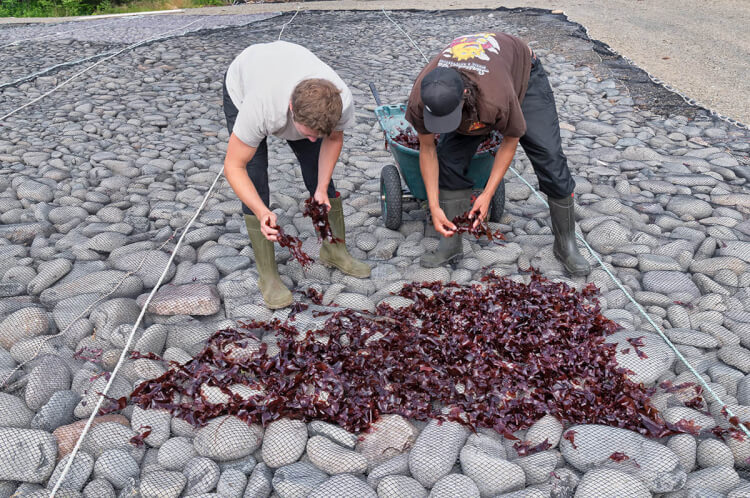
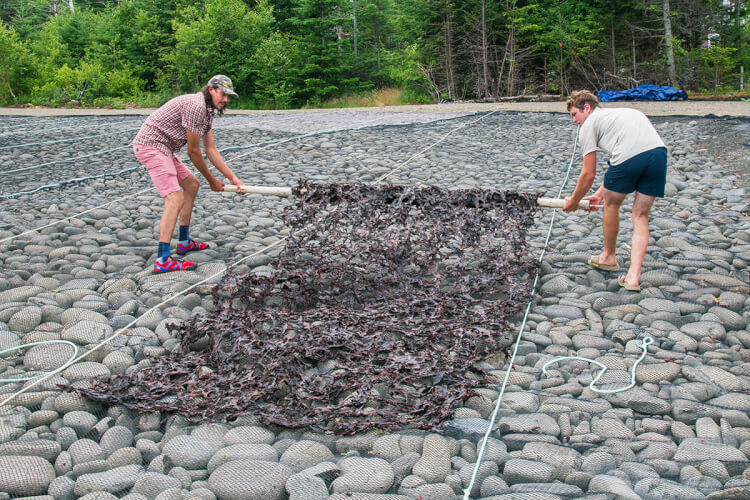
Rain can be a problem. If the dulse doesn’t dry properly, it might still be usable but won’t get top dollar. Good quality dulse earns the harvesters about $15 per pound when dry.
Wayne pointed out that the business hasn’t changed much over the years. “Other than using motors on the boat and the shaker, it’s the same way dulse was harvested 100 years ago.”
Dry dulse is crunchy, though a bit chewy at the same time. It is only mildly salty if dried properly with a subtle smoky flavour.
We were amazed at how popular it is here as a snack. Kyle said that he always has a “dash stash” for easy snacking — a paper bag of dulse on his truck dashboard.
Dulse is also ground up and used for food supplements and in salads, soups, casseroles and other dishes.
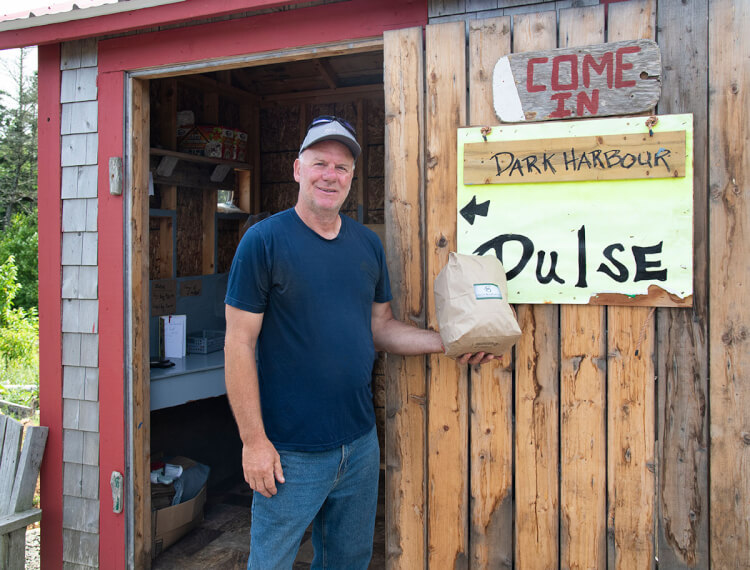
While Dark Harbour Dulse is shipped everywhere, people can also buy it directly from Wayne. He keeps bags of it in a small shelter on site.
When he isn’t around, you can simply help yourself to a bag ($20 for a big bag, $10 for a small bag) and leave the money. He even leaves a box with money in it in case you need change — another way of doing business that probably hasn’t changed in 100 years.
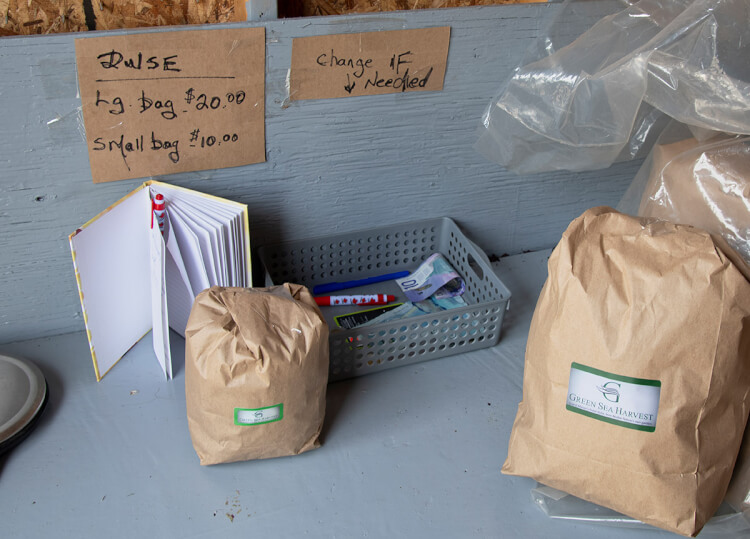
Resources
For more information on other attractions throughout New Brunswick visit Tourism New Brunswick.
Other articles on New Brunswick on Photojourneys that you might enjoy
- Two outstanding Bed & Breakfasts in Fredericton
- King’s Landing – A Window to the Past
- Having a Sweet Time in St. Stephen, New Brunswick
- Covered bridges of New Brunswick
- Exploring Cape Enrage
- Saint John, New Brunswick is a Delightful Mix of History and Nature
- St. Martins and the Fundy Trail Parkway
- Minister’s Island – Driving Across the Ocean Floor in New Brunswick
- Kingsbrae Gardens near St. Andrews
Subscribe to Photojourneys below
Feel free to PIN this article on Dulsing in New Brunswick for later
